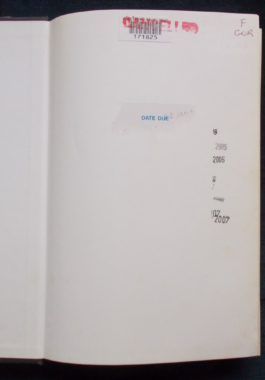- Sorry, this product is unavailable.
-
 Erich von Daniken undertakes to prove that in prehistoric and early historic times the Earth was visited by unknown beings from the Cosmos; that these extra-terrestrials created human intelligence by a deliberate genetic mutation; that the extra-terrestrials ennobled hominids 'in their own image'; that these visitors to Earth were recorded and handed down in various religions, mythologies and popular legends; and that in some places, the extra-terrestrials left physical evidence of their presence on Earth. He draws his evidence from all over the world: from the Turkish mountains where carved monoliths and giant stone heads mysteriously survive the centuries; to the secret caves of Ecuador, where treasured remnants of a bygone era remain hidden; to equatorial Africa, where the 'primitive' Dogon have been familiar for centuries with the complex movements of Sirius, a star only discovered by western astronomers since the invention of the radio telescope. He searches the ancient documents of the Hindus, the Jews and the Christians; examines religions, mythologies and legends and fins a recurring theme of 'human' gods, heavenly chariots, 'space suits', floods and disasters. The evidence is largely circumstantial - but he challenges all comers to produce an interpretation that better fits the facts. Illustrated with black and white photographs.
Erich von Daniken undertakes to prove that in prehistoric and early historic times the Earth was visited by unknown beings from the Cosmos; that these extra-terrestrials created human intelligence by a deliberate genetic mutation; that the extra-terrestrials ennobled hominids 'in their own image'; that these visitors to Earth were recorded and handed down in various religions, mythologies and popular legends; and that in some places, the extra-terrestrials left physical evidence of their presence on Earth. He draws his evidence from all over the world: from the Turkish mountains where carved monoliths and giant stone heads mysteriously survive the centuries; to the secret caves of Ecuador, where treasured remnants of a bygone era remain hidden; to equatorial Africa, where the 'primitive' Dogon have been familiar for centuries with the complex movements of Sirius, a star only discovered by western astronomers since the invention of the radio telescope. He searches the ancient documents of the Hindus, the Jews and the Christians; examines religions, mythologies and legends and fins a recurring theme of 'human' gods, heavenly chariots, 'space suits', floods and disasters. The evidence is largely circumstantial - but he challenges all comers to produce an interpretation that better fits the facts. Illustrated with black and white photographs. -

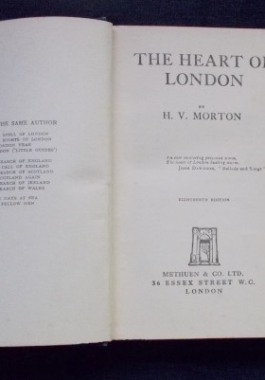 A collection of some of H.V. Morton's columns for the Daily Express, which is still in print today almost 100 years later. Morton never did the tourist route; instead he went off the beaten track to look into what really made a city. What he found was London's wonderful diversity of people against intriguing backgrounds. Among other places, he visits the docks, the Caledonian Market, Petticoat Lane, the Free Cancer Hospital, observes the nannies and their charges in Kensington Gardens, tea-shops, St. Martin's-in-the-Fields, the Lost Property Office and many other places.
A collection of some of H.V. Morton's columns for the Daily Express, which is still in print today almost 100 years later. Morton never did the tourist route; instead he went off the beaten track to look into what really made a city. What he found was London's wonderful diversity of people against intriguing backgrounds. Among other places, he visits the docks, the Caledonian Market, Petticoat Lane, the Free Cancer Hospital, observes the nannies and their charges in Kensington Gardens, tea-shops, St. Martin's-in-the-Fields, the Lost Property Office and many other places. -
 For years they thought it was just them - irritated and tormented by everything around them, from call centres to nose studs, from speed bumps to ringtones. Then along came the television series Grumpy Old Men and they knew they were not alone. It turns out that 35-54 year old men are the grumpiest lot in history. Grumpier than their parents, who were just glad to have survived the war and lived long enough to collect their pensions. Grumpier than their children, who don't care about anything except iPods and tattoos. This book extends the hand of friendship to the young, the old and the women who identified with Grumpy Old Men. It is now a modern movement and its members are proud of the title. Sir Bob Geldof: If you aren't grumpy, that means you're contented with the world. And who the **** could be that? Featuring Rick Stein, Jeremy Clarkson, Arfur Smith, Rick Wakeman and more.
For years they thought it was just them - irritated and tormented by everything around them, from call centres to nose studs, from speed bumps to ringtones. Then along came the television series Grumpy Old Men and they knew they were not alone. It turns out that 35-54 year old men are the grumpiest lot in history. Grumpier than their parents, who were just glad to have survived the war and lived long enough to collect their pensions. Grumpier than their children, who don't care about anything except iPods and tattoos. This book extends the hand of friendship to the young, the old and the women who identified with Grumpy Old Men. It is now a modern movement and its members are proud of the title. Sir Bob Geldof: If you aren't grumpy, that means you're contented with the world. And who the **** could be that? Featuring Rick Stein, Jeremy Clarkson, Arfur Smith, Rick Wakeman and more. -
 This book, which has nothing to do with anything, owes nothing to almost everyone including Robert Burns, Napoleon, Graeme Green, Livingstone Hopkins, Longfellow, John Bull, Guiseppe Verdi, Daniel Defoe, Lord Byron and others. It owes a lot to Bill Wannan, who over the years has pandered to his sudden rushes of comic inspiration and has strayed into a world of dreadful puns, comic narrative, biographies brief and banal, philosophical snatches and illustrated idiocy. His assiduous filing has allowed the accumulation of these visual and verbal tid-bits for the delectation of mankind. So if you want to knit a scarf for a giraffe, see Mr. Hyde's last confession, understand the difference between a ballad and a ballade, read of the historic meeting between William Wordsworth and the Inspector of Stamps, find out who was the world's most eligible vandal - then this book is for you. Illustrated.
This book, which has nothing to do with anything, owes nothing to almost everyone including Robert Burns, Napoleon, Graeme Green, Livingstone Hopkins, Longfellow, John Bull, Guiseppe Verdi, Daniel Defoe, Lord Byron and others. It owes a lot to Bill Wannan, who over the years has pandered to his sudden rushes of comic inspiration and has strayed into a world of dreadful puns, comic narrative, biographies brief and banal, philosophical snatches and illustrated idiocy. His assiduous filing has allowed the accumulation of these visual and verbal tid-bits for the delectation of mankind. So if you want to knit a scarf for a giraffe, see Mr. Hyde's last confession, understand the difference between a ballad and a ballade, read of the historic meeting between William Wordsworth and the Inspector of Stamps, find out who was the world's most eligible vandal - then this book is for you. Illustrated. -
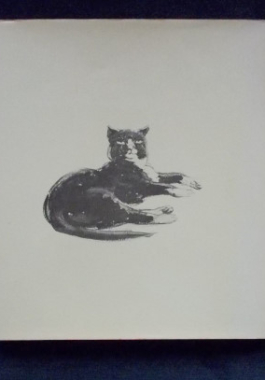
 Norman Lindsay kept a small warm corner of his long artistic life for his cats. He not only collected them and kept a horde of them in the stables and sheds, the gardens, bush and architectural nooks of Springwood - allowing the occasional prince to share the master's studio - but he drew them with humour and delightful observation. While The Magic Pudding made Lindsay's kookaburras famous, this other small anabranch of his art meandered own without public scrutiny amid the controversy, furor and celebration of his paintings and pen drawings. Some of the collection presented here were done with quick delight over the behaviour of one of his Springwood friends, others were drawn as cartoons for The Lone Hand or The Bulletin and others were done as Christmas cards or jokes. They all express the pleasure and delight his feline friends gave him. His long time friend, poet and author Douglas Stewart, introduces the drawings with an affectionate memoir of Lindsay and his cats.
Norman Lindsay kept a small warm corner of his long artistic life for his cats. He not only collected them and kept a horde of them in the stables and sheds, the gardens, bush and architectural nooks of Springwood - allowing the occasional prince to share the master's studio - but he drew them with humour and delightful observation. While The Magic Pudding made Lindsay's kookaburras famous, this other small anabranch of his art meandered own without public scrutiny amid the controversy, furor and celebration of his paintings and pen drawings. Some of the collection presented here were done with quick delight over the behaviour of one of his Springwood friends, others were drawn as cartoons for The Lone Hand or The Bulletin and others were done as Christmas cards or jokes. They all express the pleasure and delight his feline friends gave him. His long time friend, poet and author Douglas Stewart, introduces the drawings with an affectionate memoir of Lindsay and his cats. -
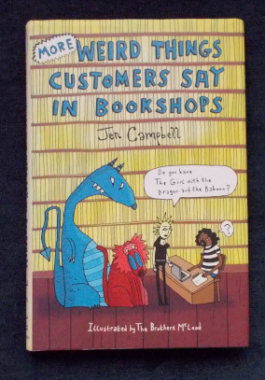 From 'Did Harry Potter kill Hitler' to 'Can we play cricket in your bookshop?', here's a bewildering, slightly alarming and definitely hilarious selection of the most ridiculous conversations from the shop floor! And these gems and gold nuggets have been supplied from booksellers across the world...and truly, they border on the realms of fantasy. Notable weird things include a request for a book on the workings of an internal combustion engine suitable for a three-year-old, the lost ferret and speculation that The Hungry Caterpillar was possibly bulimic...honestly, no-one could invite this stuff....
From 'Did Harry Potter kill Hitler' to 'Can we play cricket in your bookshop?', here's a bewildering, slightly alarming and definitely hilarious selection of the most ridiculous conversations from the shop floor! And these gems and gold nuggets have been supplied from booksellers across the world...and truly, they border on the realms of fantasy. Notable weird things include a request for a book on the workings of an internal combustion engine suitable for a three-year-old, the lost ferret and speculation that The Hungry Caterpillar was possibly bulimic...honestly, no-one could invite this stuff.... -

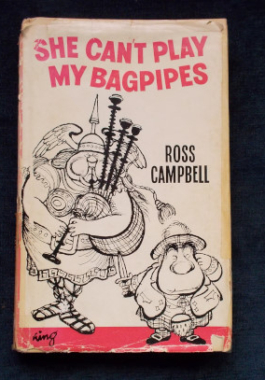 Ross was regarded as one of Australia's greatest humorists, writing about a great Australian institution - the suburban family - and his tales of family life in the burbs at Oxalis Cottage were an instant hit in Australia's Daily Telegraph. This collection of columns include such philosophical questions as: should mistresses go out to work? Are koalas vicious? Why do good looking authors write bad books? Do wine connoisseurs get drunk? These posers, and more, are covered in Campbell's hilarious low-falutin' , soft-bitten Aussie style.
Ross was regarded as one of Australia's greatest humorists, writing about a great Australian institution - the suburban family - and his tales of family life in the burbs at Oxalis Cottage were an instant hit in Australia's Daily Telegraph. This collection of columns include such philosophical questions as: should mistresses go out to work? Are koalas vicious? Why do good looking authors write bad books? Do wine connoisseurs get drunk? These posers, and more, are covered in Campbell's hilarious low-falutin' , soft-bitten Aussie style. -
 The mystery of the Man behind the Iron Mask has intrigued people for over 250 years, inspiring as much fantasy as serious conjecture. This is the story of the story, so to speak; an account of the theories and counter-theories, from the claim that he was the twin brother of Louis XIV to the recognition that he was Eustache Dauger, with diversion by way of such candidates as the Duke of Monmouth, Richard Cromwell, Molière, Nicholas Fouquet, an Armenian archbishop, an Italian astrologer and many more. Complete and comprehensive, this is a presentation of all the known facts of the prisoner's existence chronologically, as they have been discovered, together with all the myths as they have flourished from the preposterous stories put about by his gaoler in 1669 to the alleged discovery of his skeleton in a tower in Cannes in 1977. As the various stories are revealed, the reader may accept or reject the assorted evidence and develop his own views before the author presents his own conclusions. Illustrated.
The mystery of the Man behind the Iron Mask has intrigued people for over 250 years, inspiring as much fantasy as serious conjecture. This is the story of the story, so to speak; an account of the theories and counter-theories, from the claim that he was the twin brother of Louis XIV to the recognition that he was Eustache Dauger, with diversion by way of such candidates as the Duke of Monmouth, Richard Cromwell, Molière, Nicholas Fouquet, an Armenian archbishop, an Italian astrologer and many more. Complete and comprehensive, this is a presentation of all the known facts of the prisoner's existence chronologically, as they have been discovered, together with all the myths as they have flourished from the preposterous stories put about by his gaoler in 1669 to the alleged discovery of his skeleton in a tower in Cannes in 1977. As the various stories are revealed, the reader may accept or reject the assorted evidence and develop his own views before the author presents his own conclusions. Illustrated. -
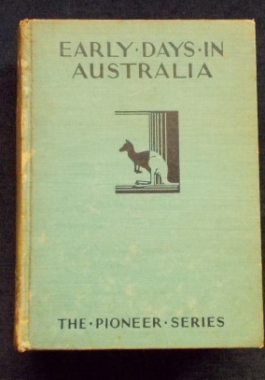 A collection of writings by various authors detailing the search for the Great Southland Terra Australis dating from accounts as far back as the 1400s. In this volume: The Early Voyagers, William Howitt; The Voyage Of Luis De Torres, R.H. Major; The Voyage of Francis Pelsart, John Pinkerton; The Voyage of Tasman, from Dr Lardner's Cabinet Cyclopædia; The Wreck Of The Vergulde Draeck, R.H. Major; In Search Of A Wreck, Matthew Flinders; Dampier And The Buccaneers, Samuel Bennett; First Voyage Of Captain Cook, Roderick Flanagan; The Voyage Of Captain Marion, Matthew Flinders; The Voyage Of Captain Furneaux, Reverend J.E.T. Woods; La Perouse, And The Voyages In Quest Of Him, William Howitt; The Voyages Of Bass And Flinders, from Dr Lardner's Cabinet Cyclopædia; Founding A Country, Roderick Flanagan; Troubles With The Natives, Samuel Bennett; Captain John Hunter In New South Wales, Samuel Bennett; John Batman And The Settlement Of Port Phillip, from Batman's Journal; The Story Of William Buckley, William Westgarth; An Emigrant's Adventures, Anonymous; In The Goldfields, Kinahan Cornwallis.
A collection of writings by various authors detailing the search for the Great Southland Terra Australis dating from accounts as far back as the 1400s. In this volume: The Early Voyagers, William Howitt; The Voyage Of Luis De Torres, R.H. Major; The Voyage of Francis Pelsart, John Pinkerton; The Voyage of Tasman, from Dr Lardner's Cabinet Cyclopædia; The Wreck Of The Vergulde Draeck, R.H. Major; In Search Of A Wreck, Matthew Flinders; Dampier And The Buccaneers, Samuel Bennett; First Voyage Of Captain Cook, Roderick Flanagan; The Voyage Of Captain Marion, Matthew Flinders; The Voyage Of Captain Furneaux, Reverend J.E.T. Woods; La Perouse, And The Voyages In Quest Of Him, William Howitt; The Voyages Of Bass And Flinders, from Dr Lardner's Cabinet Cyclopædia; Founding A Country, Roderick Flanagan; Troubles With The Natives, Samuel Bennett; Captain John Hunter In New South Wales, Samuel Bennett; John Batman And The Settlement Of Port Phillip, from Batman's Journal; The Story Of William Buckley, William Westgarth; An Emigrant's Adventures, Anonymous; In The Goldfields, Kinahan Cornwallis. -
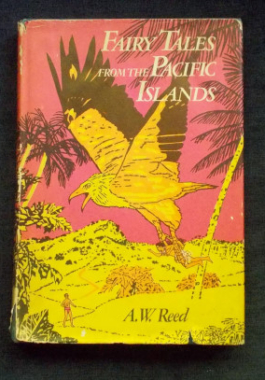 This is a real fantasy trip around the Pacific Islands as Reed retells these beautiful fanciful stories and legends: from New Zealand: The Sky Father and The Earth Mother; The Sea Fairies and Hinemoa and Tutanekai; from Hawaii: The Little People Of Hawaii and The Goddess Of The Volcano; from Tahiti: The Children Who Became Stars; from Samoa: The Sandpiper And The Crab; from Tonga: How Maui Brought Fire To Tonga; from Niue: The Woman Who Was Swallowed By A Whale; from Cook Islands: The Gift Of The Eel God; from Chatham Islands: The Sea Monster; from Fiji: The Giant Bird and The Spirit-That-Changes-People; from the Solomon Islands: The Foolish Canoe Paddlers and Why The Moon Has A Dirty Face; from New Britain: The Wise Brother And The Foolish Brother; from New Guinea: How The Turtle Got Its Shell and The Snake And The Cockatoo; from New Hebrides: Six Men Who Tried To Catch A Sunbeam; from Nauru: Young Spider In The Sky; from Caroline Islands: The Mouse Who Was Hungry; from Marshall Islands: The First Sail; from Paulau Islands: The Boy Who Came From The Sun Egg. Illustrated by Stewart Irwin.
This is a real fantasy trip around the Pacific Islands as Reed retells these beautiful fanciful stories and legends: from New Zealand: The Sky Father and The Earth Mother; The Sea Fairies and Hinemoa and Tutanekai; from Hawaii: The Little People Of Hawaii and The Goddess Of The Volcano; from Tahiti: The Children Who Became Stars; from Samoa: The Sandpiper And The Crab; from Tonga: How Maui Brought Fire To Tonga; from Niue: The Woman Who Was Swallowed By A Whale; from Cook Islands: The Gift Of The Eel God; from Chatham Islands: The Sea Monster; from Fiji: The Giant Bird and The Spirit-That-Changes-People; from the Solomon Islands: The Foolish Canoe Paddlers and Why The Moon Has A Dirty Face; from New Britain: The Wise Brother And The Foolish Brother; from New Guinea: How The Turtle Got Its Shell and The Snake And The Cockatoo; from New Hebrides: Six Men Who Tried To Catch A Sunbeam; from Nauru: Young Spider In The Sky; from Caroline Islands: The Mouse Who Was Hungry; from Marshall Islands: The First Sail; from Paulau Islands: The Boy Who Came From The Sun Egg. Illustrated by Stewart Irwin. -
 The author talks mostly about people he claims to know, like his neighbours in his imaginary suburban street, Crawlie Crescent. And Maisie the Barmaid. His Uncle Duncan. And the everyday, absurd family events that were a part of the Australian suburban landscape of the sixties. Collie worked for the Australasian Post for ten years, in which his column Corn Beef and Collie was a regular feature. Typical Aussie humour at its best. Illustrated by 'Vane'.
The author talks mostly about people he claims to know, like his neighbours in his imaginary suburban street, Crawlie Crescent. And Maisie the Barmaid. His Uncle Duncan. And the everyday, absurd family events that were a part of the Australian suburban landscape of the sixties. Collie worked for the Australasian Post for ten years, in which his column Corn Beef and Collie was a regular feature. Typical Aussie humour at its best. Illustrated by 'Vane'. -
 At twenty-nine, Bettger was a failed insurance salesman. By the time he was forty he owned a country estate and could have retired. What are the selling secrets that turned Bettger’s life around from defeat to unparalleled success and fame as one of the highest paid salesmen in America? Here he reveals his personal experiences and explains the foolproof principles that he developed and perfected. He shares instructive anecdotes and step-by-step guidelines on how to develop the style, spirit, and presence of a winning salesperson. He covers: the power of enthusiasm; how to conquer fear; the key word for turning a skeptical client into an enthusiastic buyer; the quickest way to win confidence; the seven golden rules for closing a sale. This was first published in 1951 and the times have changed - but people don't. There is plenty that is still applicable today.
At twenty-nine, Bettger was a failed insurance salesman. By the time he was forty he owned a country estate and could have retired. What are the selling secrets that turned Bettger’s life around from defeat to unparalleled success and fame as one of the highest paid salesmen in America? Here he reveals his personal experiences and explains the foolproof principles that he developed and perfected. He shares instructive anecdotes and step-by-step guidelines on how to develop the style, spirit, and presence of a winning salesperson. He covers: the power of enthusiasm; how to conquer fear; the key word for turning a skeptical client into an enthusiastic buyer; the quickest way to win confidence; the seven golden rules for closing a sale. This was first published in 1951 and the times have changed - but people don't. There is plenty that is still applicable today. -
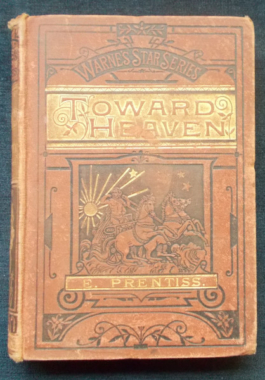 Warne's Star Series. This volume also appears under the titles of The Percys; A Mother's Influence and Ever Heavenward. (Not to be confused with Stepping Heavenward.) First published in 1870, we learn that Mr. Percy has decided to send his older children to school hours away in New York City, resulting in many changes to his whole family. Mrs. Percy is broken-hearted but agrees to let them go, as her husband is convinced that the trials and temptations of school will help the children grow in their Christian faith. Through personal letters, we learn about life at boarding school and its challenges, as well as events back at home. With realism and humor, the author draws the reader into to this loving family and makes one feel at home among them. They are not without their struggles andtroubles but comic relief is provided by twin brothers Rio and Lio and the clumsy Daisy. Mrs. Percy is the real hero of the story, as she guides her flock, teaching them love for God above all.
Warne's Star Series. This volume also appears under the titles of The Percys; A Mother's Influence and Ever Heavenward. (Not to be confused with Stepping Heavenward.) First published in 1870, we learn that Mr. Percy has decided to send his older children to school hours away in New York City, resulting in many changes to his whole family. Mrs. Percy is broken-hearted but agrees to let them go, as her husband is convinced that the trials and temptations of school will help the children grow in their Christian faith. Through personal letters, we learn about life at boarding school and its challenges, as well as events back at home. With realism and humor, the author draws the reader into to this loving family and makes one feel at home among them. They are not without their struggles andtroubles but comic relief is provided by twin brothers Rio and Lio and the clumsy Daisy. Mrs. Percy is the real hero of the story, as she guides her flock, teaching them love for God above all. -
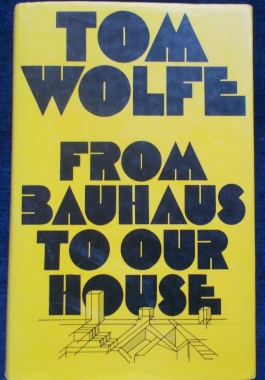
The irrepressible Wolfe has a satiric 'go' at the pretensions of Bauhaus art, attitudes and architecture. 'Starting from zero', 'bourgeois', the Cubists, Fauvists, Secessionists and every 'ism' comes under the gun, including Post-Modernism. Wolfe follows architectural design from Europe to America where Bauhaus was embraced in earnest and explores, with due irony, the vast contradiction between the bare, spare impersonal and abstract Bauhaus architecture and the exuberant, muscle-flexing populace that it serves. Illustrated with black and white photos
-
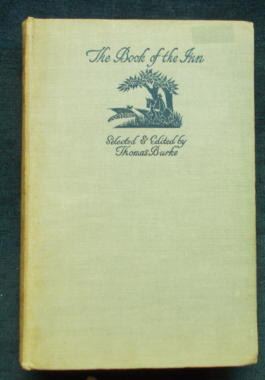 Subtitle: Being Two Hundred Pictures of the English Inn from the Earliest Times to the Coming of the Railway Hotel. Somewhat misleading - this is not a book of two hundred pictures, but two hundred observations on the history of the English inn and its role in society, travel, festivals, portentous solemnity, a place of repose...The observations come from a fantastic diversity of names: John Bunyan, Samuel Pepys, Daniel Defoe, James Boswell, Disraeli, Dickens, Washington Irving, Thomas de Quincey, Shakespeare, Sir Walter Scott, 'George Eliot', Chaucer, Anthony Trollope and many more. The theme of the observations is as diverse as the contributors: from the 'gallant' in the tavern to the arranging of duels; from gluttons to gourmands; from highwaymen to harridans; from cockroaches to cleanliness and - of course - hosts and hostesses.
Subtitle: Being Two Hundred Pictures of the English Inn from the Earliest Times to the Coming of the Railway Hotel. Somewhat misleading - this is not a book of two hundred pictures, but two hundred observations on the history of the English inn and its role in society, travel, festivals, portentous solemnity, a place of repose...The observations come from a fantastic diversity of names: John Bunyan, Samuel Pepys, Daniel Defoe, James Boswell, Disraeli, Dickens, Washington Irving, Thomas de Quincey, Shakespeare, Sir Walter Scott, 'George Eliot', Chaucer, Anthony Trollope and many more. The theme of the observations is as diverse as the contributors: from the 'gallant' in the tavern to the arranging of duels; from gluttons to gourmands; from highwaymen to harridans; from cockroaches to cleanliness and - of course - hosts and hostesses. -

Yes, everything you thought you knew is STILL wrong! As made famous on QI - Quite Interesting with Stephen Fry. You'll be amazed at which country has the lowest age of consent; and that you should definitely NOT urinate on a jellyfish sting to ease the pain; and you will also discover when a spiral staircase is not a spiral staircase. Great potential for trivia buffs.
-
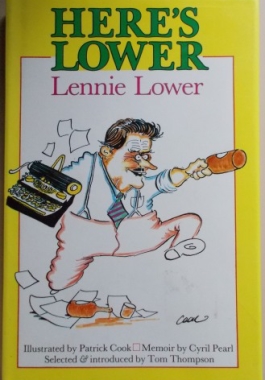
Here’s Lower: Lennie Lower
$20.00Lower only wrote the one novel, Here's Luck, in which Gudgeon and Son battle the great Australian icons - the police, the wife, the booze and the races. Here is a selection of his whimsical newspaper columns of the 1930s, short tales which were a showcase for Lower's natural Aussie anarchy. You can get the low-down on Banking; The Cruel Tactics of the Emu; The Terrors of Wealth; The Perils of the Bathtub and What Bread Is and How To Use It among other wits and wisdoms on life.


